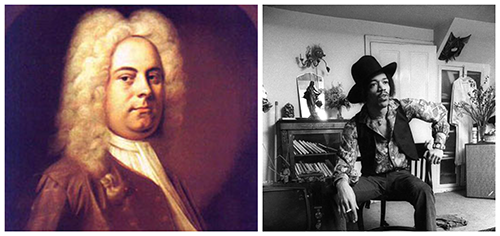By Daniel Hathaway
There are no concerts in Northeast Ohio to note, but keep an eye on our Concert Listings as the new season begins to gather momentum.
NEWS BRIEFS:
The New York Philharmonic announced on Tuesday that it had secured a $40 million donation from the financier Oscar L. Tang, a co-chairman of its board, and his wife, Agnes Hsu‐Tang, an archaeologist and art historian, the largest contribution to the endowment in the ensemble’s 181-year history.
The donation will be used to endow the Philharmonic’s music and artistic director chair starting in the 2025-26 season, when Gustavo Dudamel, the 42-year-old leader of the Los Angeles Philharmonic, becomes music director designate. Read the article in the New York Times.
Also in the Times, architectural critic Michael Kimmelman writes that “The Perelman Performing Arts Center, a glamorous $500 million project, may yet turn the World Trade Center into a neighborhood. Read “A Spectacular Marble Cube Rises at Ground Zero” here.TODAY’S ALMANAC:
September 14 marks several notable birthdays: Austrian composer Michael Haydn (1737), Italian composer Luigi Cherubini (1760), American composer and organist George Whiting (1840), and French pianist and composer Gabrielle Ferrari (1851), as well as the death of American composer and pianist Mary Howe (1964).
Cherubini was known for both sacred music and opera, and for his stylistic straddling of the Classical and Romantic eras. His best-known work is the opera Medea, which tells the story of that mythological character who killed her children in revenge after being abandoned by her husband Jason.
One rare Northeast Ohio performance of Medea came in 2017 from the Cleveland Institute of Music Opera Theater program. In a preview conversation with Mike Telin, director David Bamberger cautioned against judging the title character too harshly: “In Euripides’ play, it’s clear that our sympathies are supposed to lie with her even though she does terrible things.” Read our review here.
Cherubini also ties in to one important moment in the area’s history. On June 3, 1970, Robert Shaw led a community performance of the composer’s Requiem in c at Kent United Church of Christ to commemorate the tragedy of the Kent State shootings.
September 14 was also the day in 1814 when Francis Scott Key completed his poem Defence of Fort M’Henry, which would become the text to The Star-Spangled Banner.
In an earlier Diary entry, we reflected on Key and his poem in the context of 21st-century America:
The problem with Francis Scott Key, a Baltimore lawyer and district attorney, is that he had owned slaves since 1800. While he went on public record to oppose human trafficking, he also represented the owners of runaway slaves.
The problem with his poem is that for 21st-century America, its sentiments seem less and less conducive to uniting a divided nation.
We mulled over different options for a new national anthem, but found that there may not be a worthy successor. Read more here.
And on this day in 1741, George Frederic Handel (above, left) put the finishing touches on his Messiah, a composition he had been working on non-stop for 23 days. This great oratorio, first performed in Dublin near Easter but now a fixture of the Christmas season, was first proposed to him by librettist Charles Jennens in July of that year.
Jennens, who had previously worked with Handel on the oratorio Saul, wrote to a friend that “I hope [Handel] will lay out his whole Genius & Skill upon it, that the Composition may excel all his former Compositions, as the Subject excels every other Subject.” Surely the librettist would have been pleased to know that the composer worked on it morning and night until its completion, and that it would eventually become Handel’s best-known work.
Classical music and rock fans alike who are traveling to London can enjoy visiting the Handel Hendrix House on Brook Street in Mayfair, where both the 18th century composer and 20th century guitar wizard Jimi Hendrix (above, right) rented rooms. If the walls could speak!




